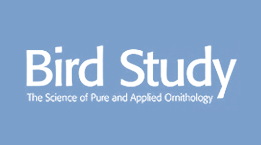Agri-environment scheme enhances breeding populations of some priority farmland birds in Northern Ireland
Capsule: The abundance of Tree sparrow Passer montanus, House Sparrow Passer domesticus and Yellowhammer Emberiza citrinella, three priority farmland birds, increased over a 5-year period in response to a targeted agri-environment scheme (AES).
Aims: To assess the effects of a targeted AES on the abundance of a suite of farmland bird species over a 5-year period.
Methods: We compare temporal changes in abundance of 12 farmland bird species of conservation concern on 33 AES and 22 control farms in County Down, Northern Ireland. Five of these species were designated targets for conservation action under the Countryside Management Scheme (CMS).
Results: CMS management was associated with more positive changes in abundance for three of the five target species and more negative changes for one target species (albeit caused mainly by a large reduction at a single farm). CMS management had little influence on the abundance of non-target species or on avian species richness. Farm-scale changes in abundance were generally unrelated to the extent of local CMS provision, the only exception involved House Sparrow and seed-rich winter habitats.
Conclusion: This study demonstrates that generic AES land management can improve the population status of target farmland birds on farms with AES management.


